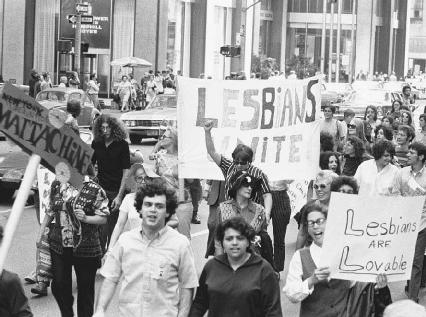June is LGBT Pride Month in the United States! This is the time LGBTQ+ people across the country acknowledge a shared history of criminal and legal oppression, negative and stereotypical representation in the media, and the ongoing erasure of many people who consider themselves part of the community. As we continue to make bounds in general society, there are still many hurdles we have to climb, and many fights to be fought. This is a month we acknowledge the work that still needs to be done, while also celebrating ourselves, our endurance, and that of those who came before us.
Since we’re all about quoting Rev. Dr. Martin Luther King, Jr. in Civil Rights discussion, he once said, “A riot is the language of the unheard.” Over the course of the 20th Century, the queer population in the United States (and abroad) were targeted heavily, with circumstances of race and gender expression exacerbating any police violence they might have experienced when gathering with others for some sense of community and normalcy. On June 28, 1969, in the very early morning, police raided the Stonewall Inn in New York. Police raids of bars that catered to members of the LGBTQ+ community were relatively common, but the events of that night were the tipping point into the fight for rights.
It had been a common thing, NYPD officers raiding bars known to host populations of LGBT people, mostly gay and bisexual, but also lesbian and gender nonconforming. Even in the 1960s, sodomy and cross dressing were against the law in New York City and other urban centers, and both led to many arrests in places like the Stonewall Inn on Christopher Street. But on this particular night, when the police arrested the bartenders for serving without a liquor license and—very specifically—anyone wearing more than three items of clothing that weren’t “gender appropriate”, those being arrested fought back. The crowd got larger, led by several gender nonconforming and trans people of color. The clash included the police barricading themselves inside the bar and calling for backup as the crowd tried to break their way in. The backup managed to get them out and disperse the crowd. But the crowd came back the next night and several nights following, squaring off with tactical forces as word spread across the country and the world.
The following June, members of New York’s queer community returned to Stonewall Inn and Greenwich Village to hold the first major Gay Pride Parade. Much as they do now, these parades acted as a combination of celebration and demonstration: we’re here, we’re queer, get over it, and give us our rights. Over the course of a few years, organizations like the Gay Liberation Front (cofounded by Marsha P. Johnson) and Gay Activist Alliance led to others like the Human Rights Campaign and GLAAD (initially the Gay & Lesbian Alliance Against Defamation). As these and other organizations proposed events from Christopher Street Liberation Day to Pride Day to Pride Week, LGBT Pride Month formed among the trenches across the country as a way to commemorate the events at Stonewall Inn. While it is not an official month in the United States, every United States President since Bill Clinton has declared June LGBT Pride Month.
And of course, we all recognize it as such, whether a declaration comes from the White House or not.
While LGBT Pride Month has become a corporate, party month in mainstream culture, there are still things that have to be done, still rights to be won, whether in legislature or in the general conscience. If someone is a gay white man or the familiar presentation of married lesbians, they have an advantage over other members of the community, including those in the letters beyond the usual acronym. While people who are bisexual or pansexual but in straight-presenting relationships often speak of erasure, those on the asexual spectrum—including asexual, aromantic, demi- or gray-sexual or romantic—as well as people who are trans and otherwise gender nonconforming still garner less recognition in the general conscience as well as fewer rights in both the criminal and legislative systems. LGBTQ+ people of color are also more affected by violence and the criminal legal system. As long as we continue to acknowledge that the ongoing battle for equal LGBTQ+ rights must be intersectional, we'll all be better for it.
But in the meantime, let’s celebrate us and our history!
Read and watch these nonfiction books and documentaries about people and places with pertinent connections to LGBTQ+ history in the United States and abroad.


